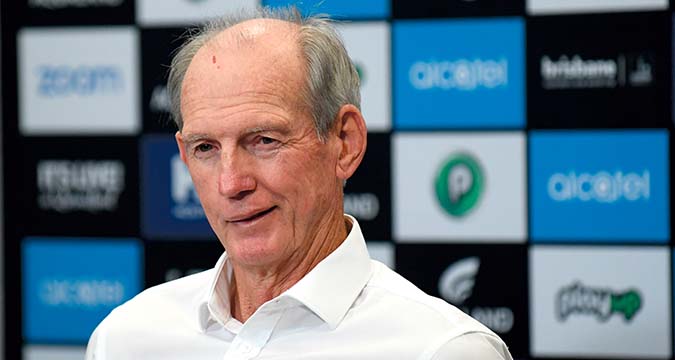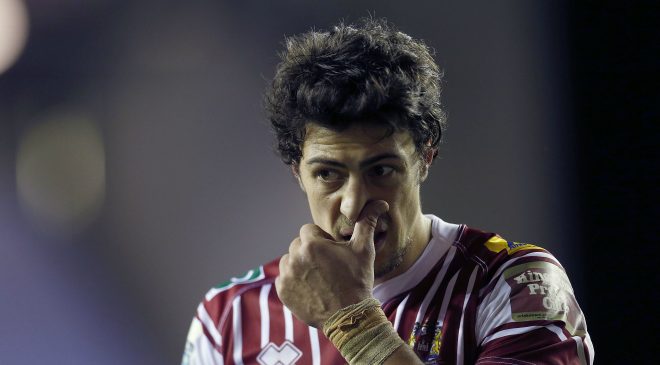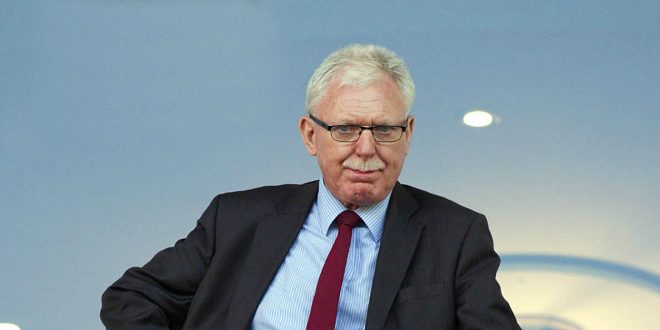
1. Wayne Bennett backed out of a deal to coach the club.
Former Wigan chairman Maurice Lindsay later revealed how, in 1999, legendary Australian coach Wayne Bennett agreed to take over the club. The former England head coach backed out of the deal after stating the move would be too much for his young, disabled son. Wigan eventually went for Kiwi Frank Endacott, instead, who lasted just over a year. This wasn’t the last time Bennett would back out of deal either, in 2006 he agreed to take over as head coach of Sydney Roosters as long as the story didn’t appear in the public domain. When it did, he stayed with Brisbane Broncos.
2. Anthony Gelling called himself the “Man of the People.”

A compiled list of random facts would be nothing without Rugby League’s most enigmatic man: Anthony Gelling. Whether it’s driving to a game on his BMX, charging down a penalty attempt or rapping about his teammates, we had to make a place for him. Arguably his greatest moment came in 2016, following Wigan’s 28-18 win over Hull FC to reach the Grand Final. Gelling was incensed by the events which led to Steve Michaels’ try levelling the scores at 16-16. Referee Ben Thaler had watched the video for five minutes, before awarding the try, although it mattered little to the final score. But Gelling, who scored the final try, swore live on Sky Sports after the game by saying: “The decision by the video ref p***ed me off by the way.” He then called himself a title you probably thought he was given by the people, that famous “Man of the People” tag. Interviewed Bill Arthur asked him to apologise and he followed by saying “What? I’m speaking for everyone. I consider myself a man of the people.” A self-anointed one, though.
3. Their first ever name was Wigan Wasps.
Following the disbandment of Wigan FC (later named Wigan & District), in 1877, the rugby club was formed two years later with the name Wigan Wasps. Many members of the old Wigan FC were part of the club, as the adopted a moniker at a time they were not commonplace within clubs. The Wasps won their first trophy, the West Lancashire Cup, in 1884 and wore their famous cherry and white kit for the first time two years later. In 1888, they beat a New Zealand side who were on tour, but were then suspended by the RFU for breaking the rules of amateurism and paying players. The club were then a major driving force in the 1895 split, which led to the formation of Rugby League, but abandoned their ‘Wasps’ name. Perhaps we may have seen such exotic names as ‘Wolfpack’ and ‘Dragons’ sooner, had it not have been for Wigan’s decision to simplify their tag.
4. Ian Lenagan played Rugby League for Wigan St Patricks.

Wigan owner Ian Lenagan may be, to most of you, the shrewd businessman at the top of the Warriors hierarchy. At one time, however, he was getting gritty like every other budding Rugby League player in his hometown. Upon his acquisition of the club, in 2007, he revealed how he had played for one of the town’s amateur clubs Wigan St Patricks during his teenage years and dreamt of playing for the club. He would go one better and eventually purchase the club, after becoming a successful theatre producer and first owning Harlequins/London Broncos and football club Oxford United FC.
5. They had the first Italian cross-code convert and he used a fake name.
Italian rugby union international Toni Danielli became the first-ever Italian to cross codes in 1957, when he joined Wigan. The former Petrarchino rugby union player unofficially played for Blackpool, before signing officially for Wigan under the pseudonym Toni Rossi. This was to prevent him from being banned from Italian Rugby Union if his Rugby League venture didn’t pay off. He would make four appearances for Wigan and later featured for St Helens on two occasions. Once he returned to Italy, he set up a club Frigomar Padova and later spent time with Venezia Mestre and was part of the Italian Rugby League side against the touring Australians at the end of the 1959/60 Kangaroos Tour. He would later return to England, living in Cornwall, and passed away in 2010.
